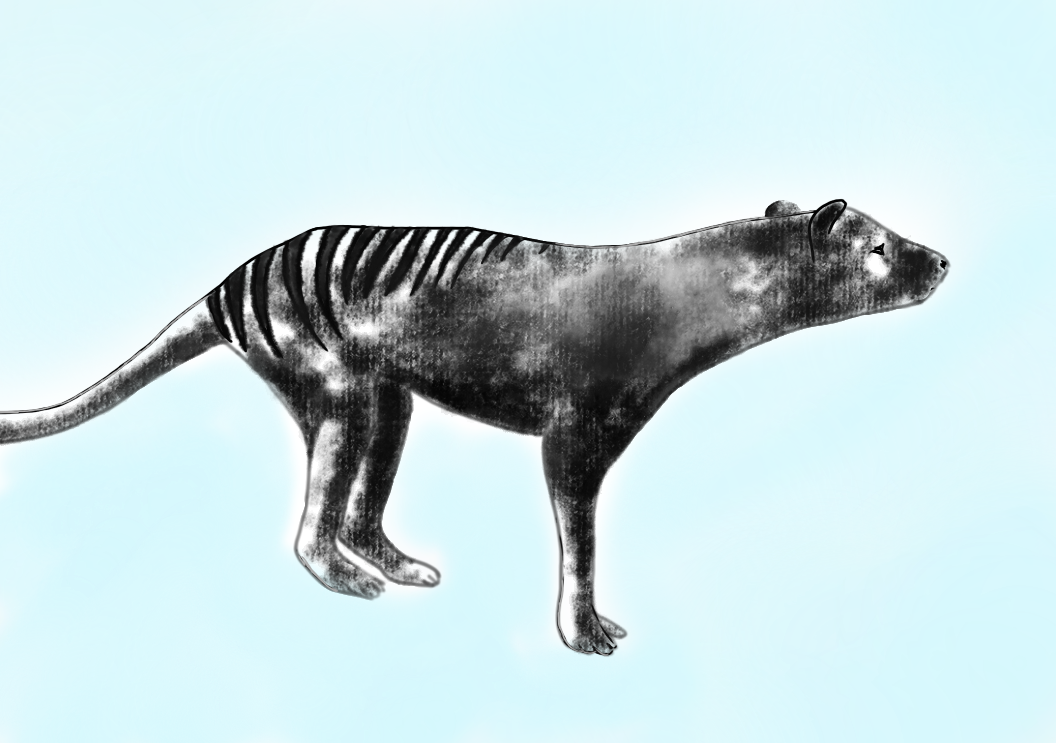The Tasmanian tiger was a species of carnivorous Australian marsupial that lived on the island of Tasmania after being driven to extinction on the mainland. When settlers arrived, their misguided beliefs that the tigers would kill livestock, combined with competition from dingoes, drove the species’ numbers steadily down. In 1936, two months after the species was granted protected status, the last known Tasmanian tiger, a male named “Benjamin,” died in Hobart at the Beaumaris Zoo.
That seemed to be the end of it. Usually, when a species goes extinct, it’s gone for good—just another statistic in the long list of species humans have killed off.
But recent research may change that. Though the tiger went extinct decades ago, there have been efforts to bring it back—most notably a 1999 effort by paleontologist and director of the Australian Museum Michael Archer. Unfortunately, his work was eventually scrapped as a $57 million bad idea.
However, today’s researchers have access to more cutting-edge technology than Archer did. Developments in CRISPR-Cas9, a gene-editing technology, have made cloning efforts easier. CRISPR surgically removes or inserts snippets of DNA to form a new strand, and with this technology, researchers were able to decode a full genome of the creature in 2017.
This recent progress is far more than researchers made in 1999, but scientists are still far from actually cloning the creature. To bring back the Tasmanian tiger, researchers will have to use the Dunnart, a small marsupial that is a relative of the tiger. The Tasmanian tiger was unique because it was the only surviving member of the Thylacinidae family, which makes it possible for it to be reconstructed from animals related to it, but harder to be reconstructed from others in its family. Researchers will have to take the Dunnart’s DNA and rearrange every strand to create an animal resembling its cousin, the Tasmanian tiger. Andrew Pask, the leader of the project, acknowledged that the project “is dependent on leaps in [CRISPR-Cas9] over the next few years.”
There could be significant benefits to resurrecting this creature. Studying and coding the genes of other marsupials in an attempt to resurrect the creature could lead to advances in the field of marsupial gene editing, and might help cure genetic diseases causing a decline in numbats—another distant marsupial relative of the thylacine. Scientists’ discoveries could also help restore the population of other iconic Australian mammals on the endangered list.
Besides the advances in science, the resurrection of the Tasmanian tiger would also have ecological benefits. By reintroducing an important predator, the ecosystem could be stabilized, slowing ecological decline.
Reviving the creature would come with a set of drawbacks, of course. There are objections to the large costs of bringing back an extinct species as well as arguments that it might lead to a loss of biodiversity when considering the unpredictability of complex ecosystems. The endeavor would also require monitoring and maintenance to ensure that the new animals would survive in their ecosystems.
Overall, the project is an intriguing prospect that might open the door for genetic research into other species. The future of the Tasmanian tiger appears bright indeed.






































































